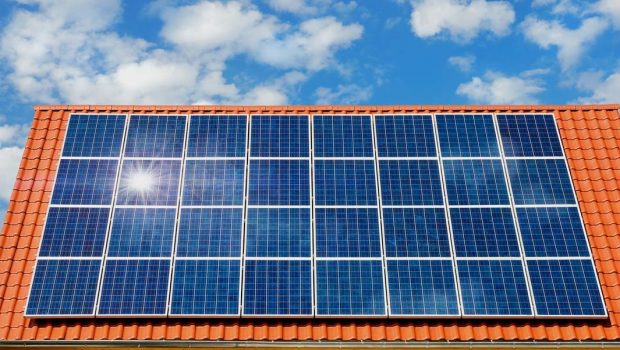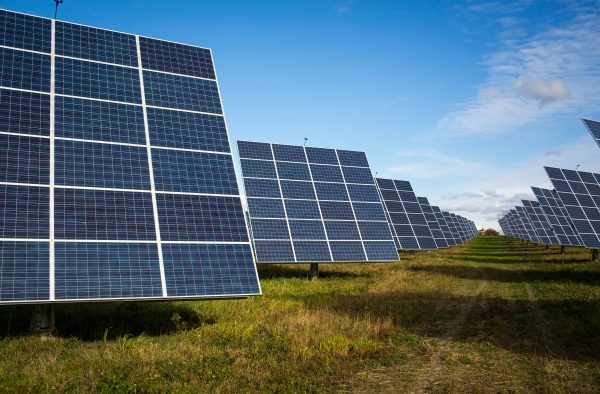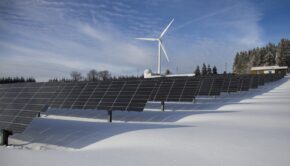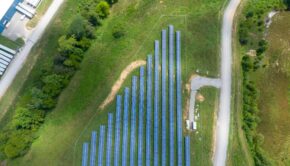What Would It Take To Go Completely Solar?
Deciding to disconnect your household from the central grid and go solar has some pretty big benefits, but as with everything in life, there are downsides too.
Solar panels have been around for a while now, being used extensively to generate renewable power for residential and commercial buildings in the United States. But in the past few years, the adoption of renewable energy technologies exploded – some data shows that the use of solar energy is set to double by 2024.
Let’s start by looking at the bright side of solar power:
Benefits of Solar
It’s clean – Solar power is the cleanest source of energy available. Electricity-generating rooftop PVs don’t produce greenhouse emissions, unlike the traditional, dirtier coal or natural gas. In fact, replacing only 1 kW of fossil-generated electricity with a rooftop solar system is the equivalent of planting about 40 trees.
It’s abundant – The sun is a limitless, incredibly powerful force and can be accessed anywhere on earth. A mind-blowing fact is that only 0.4% of U.S. territory covered by solar photovoltaics (PV) would be needed to supply all of the U.S. electricity needs.
It’s cheap – The cost of solar panel installation is less than $3 a watt; a whopping 65% decrease from $8.50 per watt 10 years ago. Moreover, after the initial investment of setting up the system, the energy you will generate will be free forever (or as long as the sun keeps shining).
Are there any downsides to solar?
It’s intermittent – Until a large-enough cost-effective storage solution is developed, solar energy has to be used right away. Residential solar batteries range from $5,000 to $7,000+ which isn’t exactly cheap.
It’s weather-dependent – Although solar energy can still be collected during cloudy and rainy days, the efficiency of the system drops. Sunny states, such as California, Hawaii, or Arizona will be able to benefit from solar generation all year, but Alaska would have no such luck.
Where the sun don’t shine…
Speaking of the sunny states, the commercial returns a household can generate from the solar panel investment will also be impacted by its location. Solar energy in the US is generated predominantly in the Southwest states, where the sun shines the most, such as California, Arizona, or Hawaii.
If you are curious about the energy mix of your U.S. state, the below interactive map can help you visualize the portion of your electricity that comes from renewable sources, such as solar:
Please include attribution to electricrate.com with this interative electricity sources by state map.
Each U.S. state offers different solar panel incentives and tax credits to encourage their adoption and to help you reach the breakeven point on your panel faster.
Here are a few types of solar panel incentives that might be available to you:
- Federal Solar Investment Tax Credit (Solar ITC) – The Solar ITC is a major incentive for going solar for all Americans to claim a portion of your solar installation on your tax return, reducing the amount you owe when you file taxes.
- Low-Interest Loans – Several states offer loans with below-market rates for renewable energy projects.
- Rebates – are partial refunds on the purchase of the solar system paid to the owner. They are usually offered by your utility company or your local government.
- Solar Renewable Energy Certificates – In participating states, homeowners get credits for the generated solar power, called SRECs. SRECs can then be sold to the utility company, eager to satisfy its renewable energy portfolio quota for anywhere between $5 to $450.
Practical Guide for Going Completely Solar
So you assessed the pros and cons listed above and you decided to invest in solar panels. However, not all solar panels are created equal and there are a number of things you will need to figure out first – including the type, direction, and inter-connection system for your panels.
Find the right location
One of the most important factors, affecting the yield of your solar panel will be the direction it faces. If you live in the Northern Hemisphere (and as a resident in the U.S. you are), the sun is in the southern part of the sky for the most part of the day. This means that your south-facing panels will receive the highest amount of sunlight, maximizing your energy output.
However! If your current electricity contract is a time-of-use (TOU) tariff, you are paying a higher price for electricity during the peak hours (usually between 5 – 7 PM). In that case, it makes sense to reduce your average electricity consumption from the grid during these times by maximizing the generation of your panels – and face your panels to the west (the position of the sun in the late-afternoon hours).
Hire a professional
Since you are going to be working with electrical circuits, you definitely should not be installing solar panels without the right technical expertise. If you feel like a solar panel installation is above your skill level, don’t worry. You can hire professionals to do it for you, to ensure it’s done just right.
Choose the system that works for you
All solar power systems work on the same basic principles, converting sunlight first into direct current (DC) power and then into alternating current (AC) power that powers your home appliances or feeds the electric grid. Your solar power system can be configured with the central electric grid in one of the three ways:
Grid Inter-tied (no batteries)
The most used system and one that is the cheapest and easiest to install. It connects your solar panels to the grid without any kind of back-up or a battery. When your solar panel is generating power, your household consumes it and any excess power is fed into the grid. When the sun isn’t shining, you consume electricity from the grid.
Grid Inter-tied (with batteries)
A more expensive and technically challenging system with battery storage, which will kick in during a power outage to supply the stored unused power. This is more expensive than the previous option because of the cost of residential solar batteries, which range between $5,000 and $7,000.
Off-Grid Solar Power Systems
With this type of system, you are not connected to your utility or the electric grid and therefore you require battery storage. Installing solar panels of this type can be very tricky and expensive because they have to be designed appropriately so that they will generate enough power throughout the year and have enough battery backup to cover your needs.
This type of a solar panel is ideal if you live in a remote, rural area and as a general rule of thumb, you shouldn’t choose it if you live in an urban, densely populated metropolitan area.
Consider community solar
Community solar projects are a good alternative if building your own solar panel is not an option. These programs are designed to give subscribers access to electricity from a shared solar installation in a form of energy bill credits.
The way the community solar works in practice is that when you sign up for a community solar program, you pay a monthly fee (usually lower than your electricity bill) and solar bill credits will then be applied to your bill, effectively bringing it down to zero.
In 2019 only, 2,056 megawatts of community solar projects were installed and there are currently 40 states with at least one community solar project online.
Hopefully, this article has given you a good idea about going completely solar. Overall, solar panels can be a great investment, not only for the future of our planet but also for your own. Solar panel installation will add an average of 4.1% to your home’s property value. And with the solar technology evolving so rapidly, we have no doubt that the future of solar is bright.

















